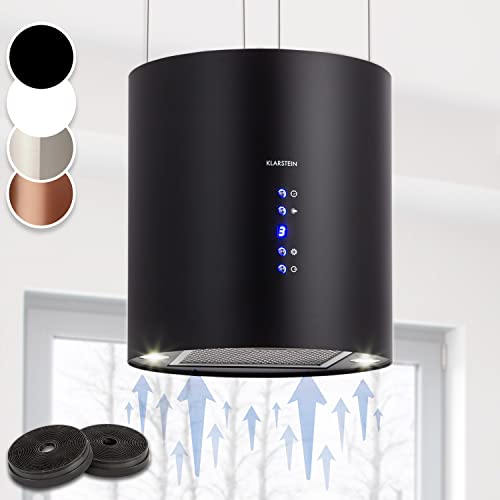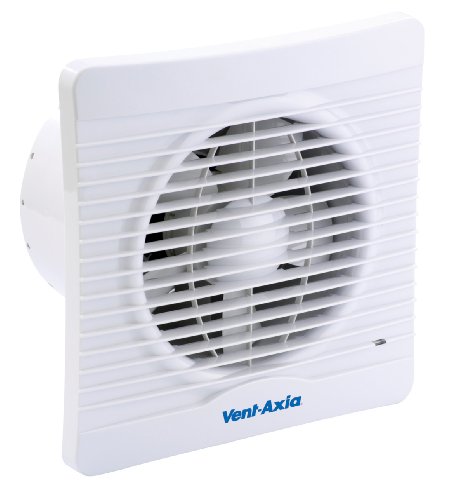How to improve your kitchen ventilation to get rid of moisture, odours and mould
Introducing the right kitchen ventilation will remove moisture, stop condensation and keep your home smelling sweet
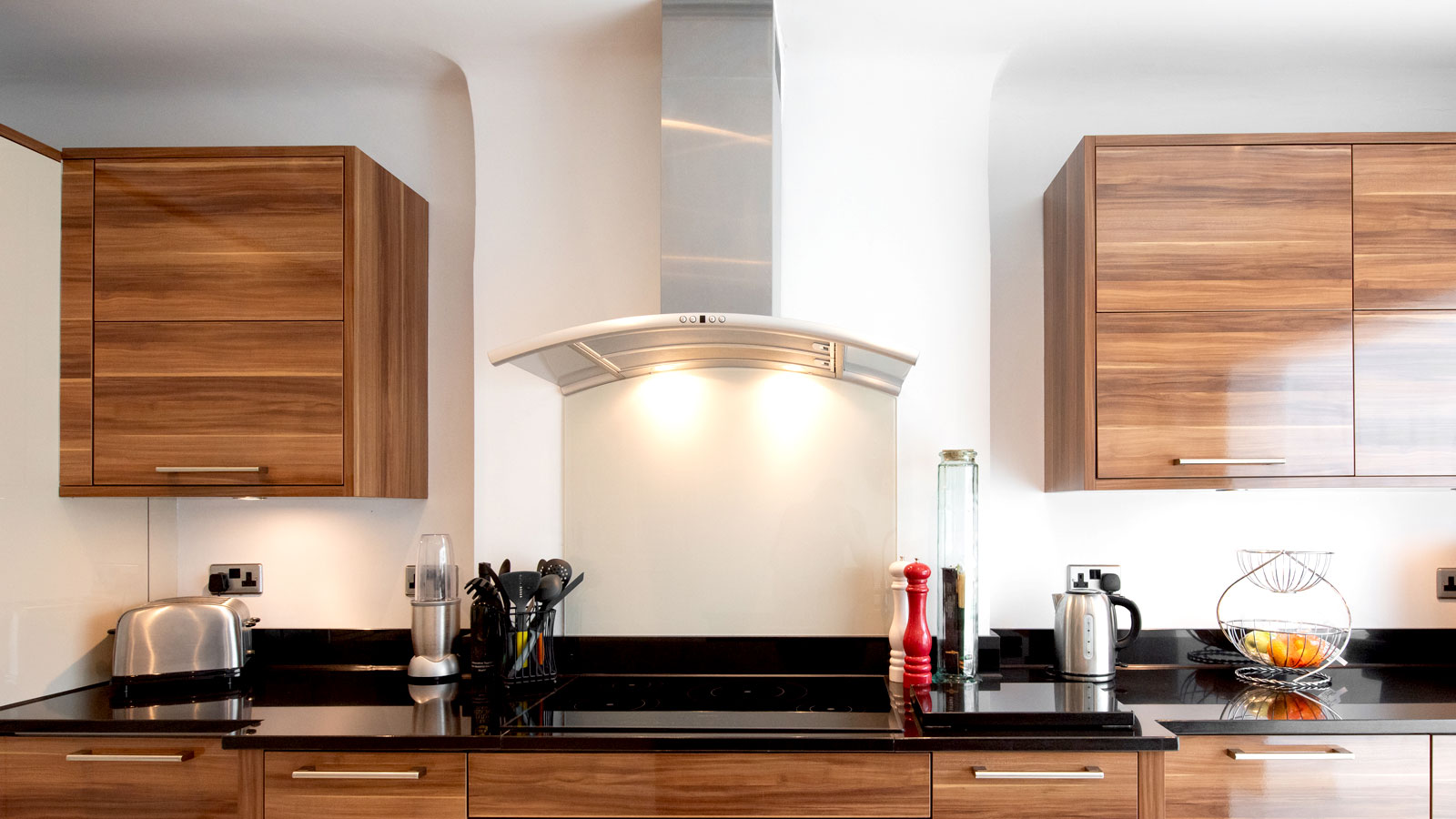
Kitchen ventilation is a critical part of a kitchen design. Without it you will be letting large amounts of moisture float around the kitchen and beyond. And if you don’t get rid of it, you will be left with stale cooking odours, damp walls, moist countertops and endless condensation.
There is the option to use natural ventilation, such as opening a window, but who wants to be letting in cold air, especially in winter. The alternative is to make sure that you have sufficient ventilation in your kitchen. Here the experts run through the best types of kitchen ventilation to choose, and offer a selection of smart tips to help keep your kitchen moisture free.

Debra Hutt is one of the experienced experts within the Wren Kitchens team, able to advise on the latest trends and developments in the industry and advise customers on the journey to designing their dream kitchen space.
Why you need it kitchen ventilation
Kitchens can produce a lot of moisture, but what causes that moisture? Debra Hutt, kitchen expert at Wren Kitchens, says, “Moisture can build up in a kitchen quickly as it’s a space used predominantly for food preparation, cooking and washing up. This often involves boiling multiple water sources, which releases steam into the atmosphere.”
Joshua Warren, air treatment expert at AO.com explains the common reasons, “Cooking produces a lot of moisture, particularly when you’re boiling, steaming or frying your food on the hob. You’ll also find that your kitchen appliances like a kettle or dishwasher also contribute to an increased humidity in your kitchen.”
It’s this regular production of moisture in a kitchen that means you need a form of ventilation to ensure you keep humidity levels down and problems away as Warren shares, “Without adequate ventilation, steam, smoke, and cooking odours can build up, potentially leading to damp, mould, and even structural damage over time.”
He adds, “Furthermore, excess moisture in the air can encourage the growth of mould and mildew, which can affect both your health and the longevity of kitchen surfaces and cabinetry.” So it makes perfect sense to invest in good ventilation.
Try these to help ventilate your kitchen
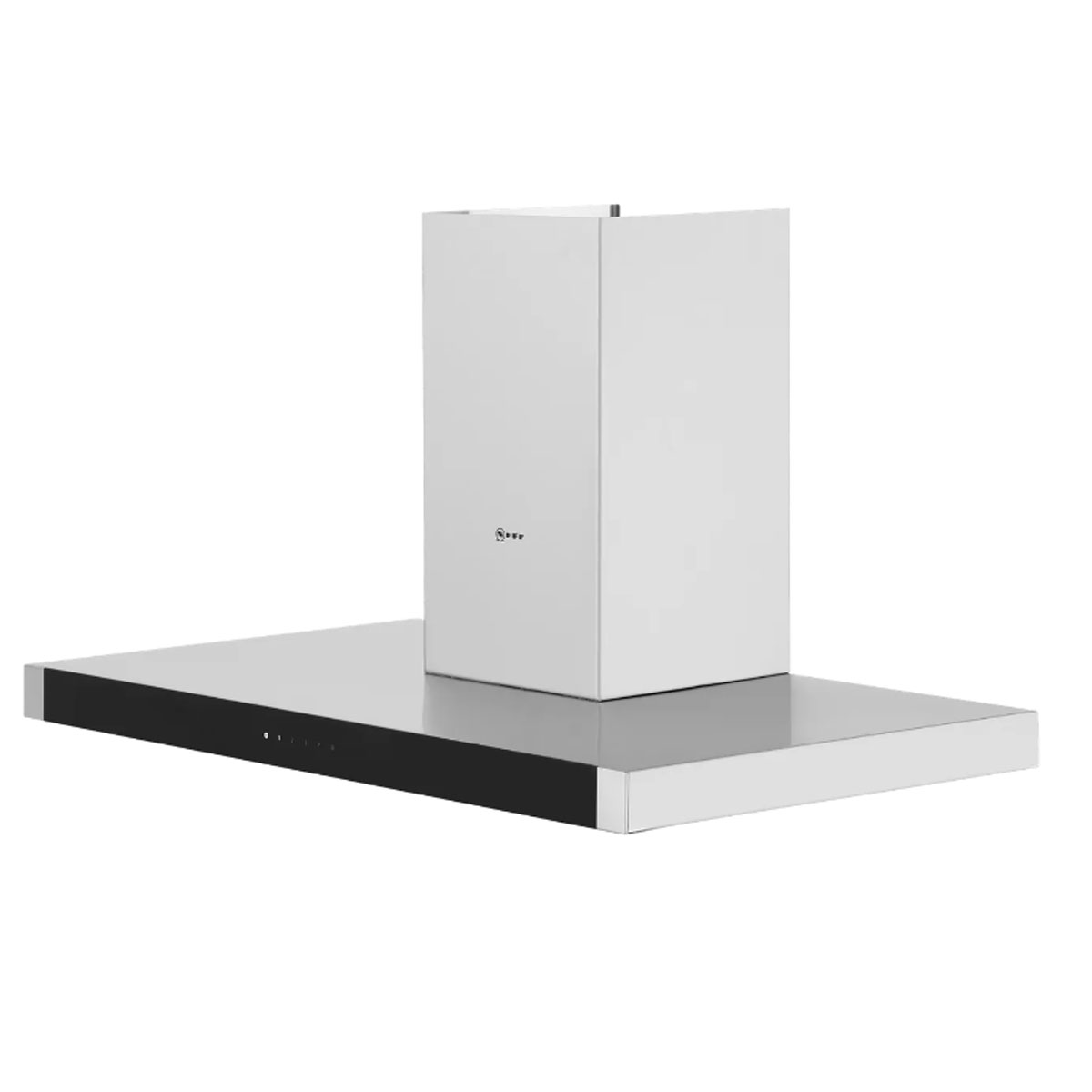
Ducted and Recirculating, this cooker hood keep things fresh either by internal or external ventilation. It removes pollen, odours and steam, and has an easy to clean grease filter.

King is the RMI Product Manager at Vent-Axia who are forerunners in energy-saving, lo-carbon products. They are committed to helping improve indoor air quality and comfort in both homes and buildings.
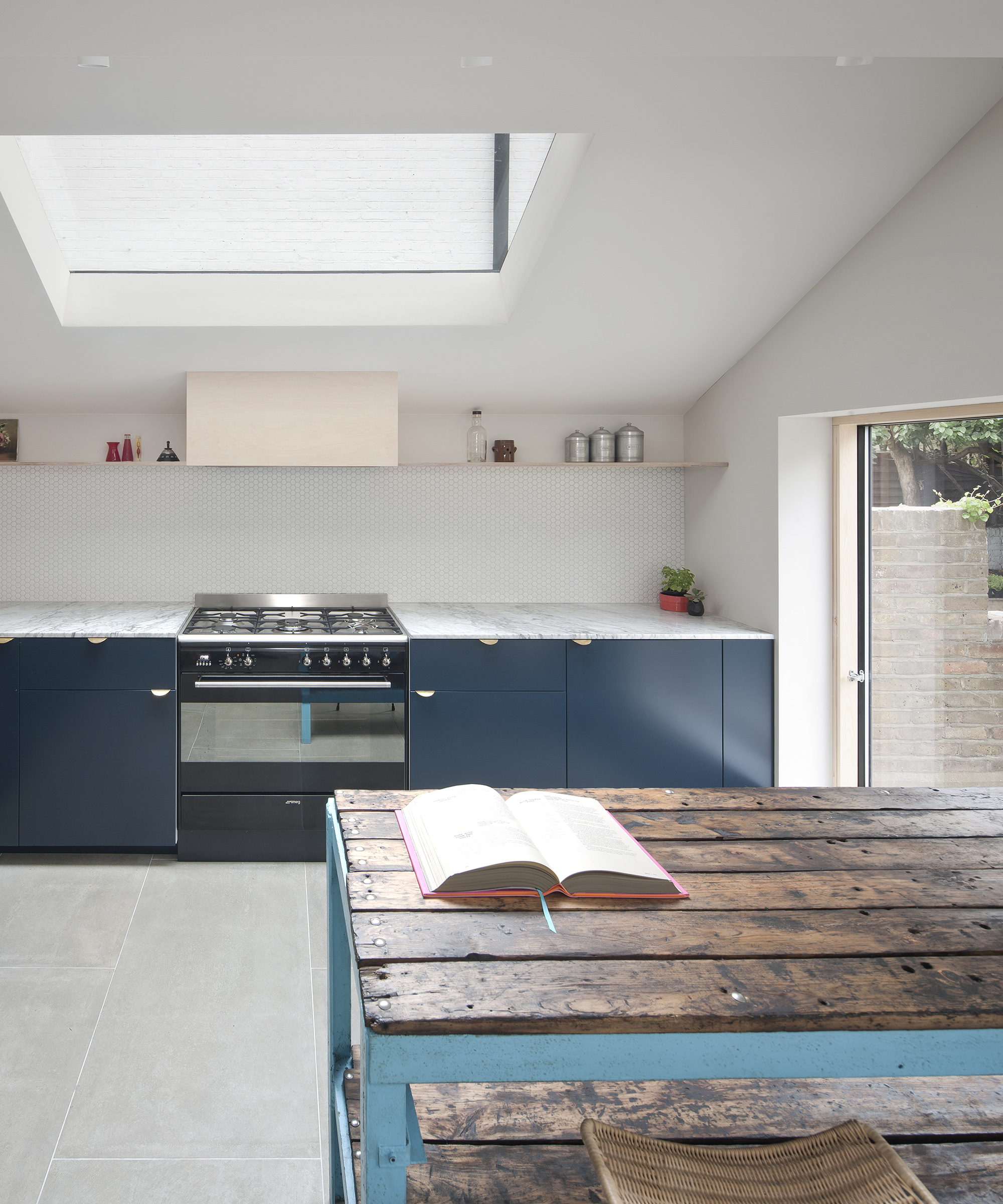
The best type of ventilation for a kitchen
There are typically two types of ventilation for a kitchen as Warren reveals, “The most effective way to ventilate your kitchen is through either a cooker hood or extractor fan.” How do they work? “Cooker hoods are installed above hobs and help to capture steam, odours and grease particles before they can disperse into the air.” He continues, “You’ll find an extractor fan similarly high up with most mounted on the wall or ceiling. Again, they pull warm, humid air from your kitchen and expel this outside.”
Natasha King from Vent-Axia gets a bit more technical, “If you are installing ventilation in an existing kitchen you can choose between intermittent or continuous running fans”
What’s the difference? King explains, “Intermittent extractor fans only run on demand,” How do they work? “They are used in conjunction with background ventilation (eg trickle vents in the windows) to provide extra ventilation as required by the user. Extractor fans can also be used in conjunction with recirculating cooker hoods to help maintain good indoor air quality (IAQ).”
King continues, “Continuous fans run at a low speed and boost only when needed, helping reduce pollutants, cooking odours and moisture consistently even when cooking frequently and can be used in conjunction with recirculating cooker hoods.”
She adds, “They also help prevent mould and mildew growth by balancing humidity levels, especially in smaller or enclosed kitchens.”
And there’s one final technical point worth noting says King, “In line with Part F (Means of Ventilation) of the Building Regulations if you have a cooker hood in your kitchen and it extracts to the outside at 30l/s, then there is no need for additional extract ventilation.”
She adds, “However, if there is no cooker hood or the cooker hood doesn’t extract to the outside (a recirculating type) then, an intermittent extractor fan needs to run at 60l/s.”
How to get better kitchen ventilation
1. Choose the right hood
Debra Hutt says, “Choose a matching range hood with the right dimensions, style and power to match your stove. It should cover the cooktop completely.” She adds, “Gas stoves also often require a more powerful hood compared to electric ones. Always refer to your kitchen designer for professional advice."
2. Add an extra extraction fan
“Install a secondary extraction fan in the room itself,” suggests Hutt. Why? “To consistently filter the overall air quality throughout the room. She adds, “Use even when you’re not actively using the kitchen appliances/cooking."
3. Keep filters clean
“Clean or replace filters in range hoods or exhaust fans regularly and always refer to manufacturer's recommendation,” advises Hutt. Why? “Grease buildup in ventilation equipment reduces efficiency and can even become a fire hazard. Also, clean the hood’s surfaces and vents periodically to maintain optimal airflow, aesthetics and hygiene.”
4. Pre-emptive extraction
Natasha King offers some simple and sage advice, “If you have a cooker hood in your kitchen, turn it on a few minutes before cooking to ensure steam, smoke and odours are caught from the start.” When finish cooking she suggests, “Also leave the cooker hood running once you have finished cooking to clear moisture, pollutants and odours."
5. Double up
Joshua Warren says, “Install an extractor fan above your hob to trap any steam from dispersing in your kitchen.” He adds, “Combine this with a dehumidifier to reduce excess moisture and improve the air quality. This combo will be particularly helpful if you have a small or enclosed kitchen.”
6. Leave windows open
“Leave your windows open whenever possible as this will allow moisture to escape rather than build up,” recommends Warren. “This tip can also be heightened by leaving your kitchen door closed when you’re cooking. By doing so, you’ll prevent moisture from spreading to other rooms in your home.”
7. Couple of quick tips
Finally, King offers a couple of easy to implement tips to help reduce moisture in the air, “Keep pot lids on when cooking, this reduces steam as well as cooking food faster.” Her other tip is, “Avoid obstructing any installed ventilation since this will reduce its ability to do its job.”
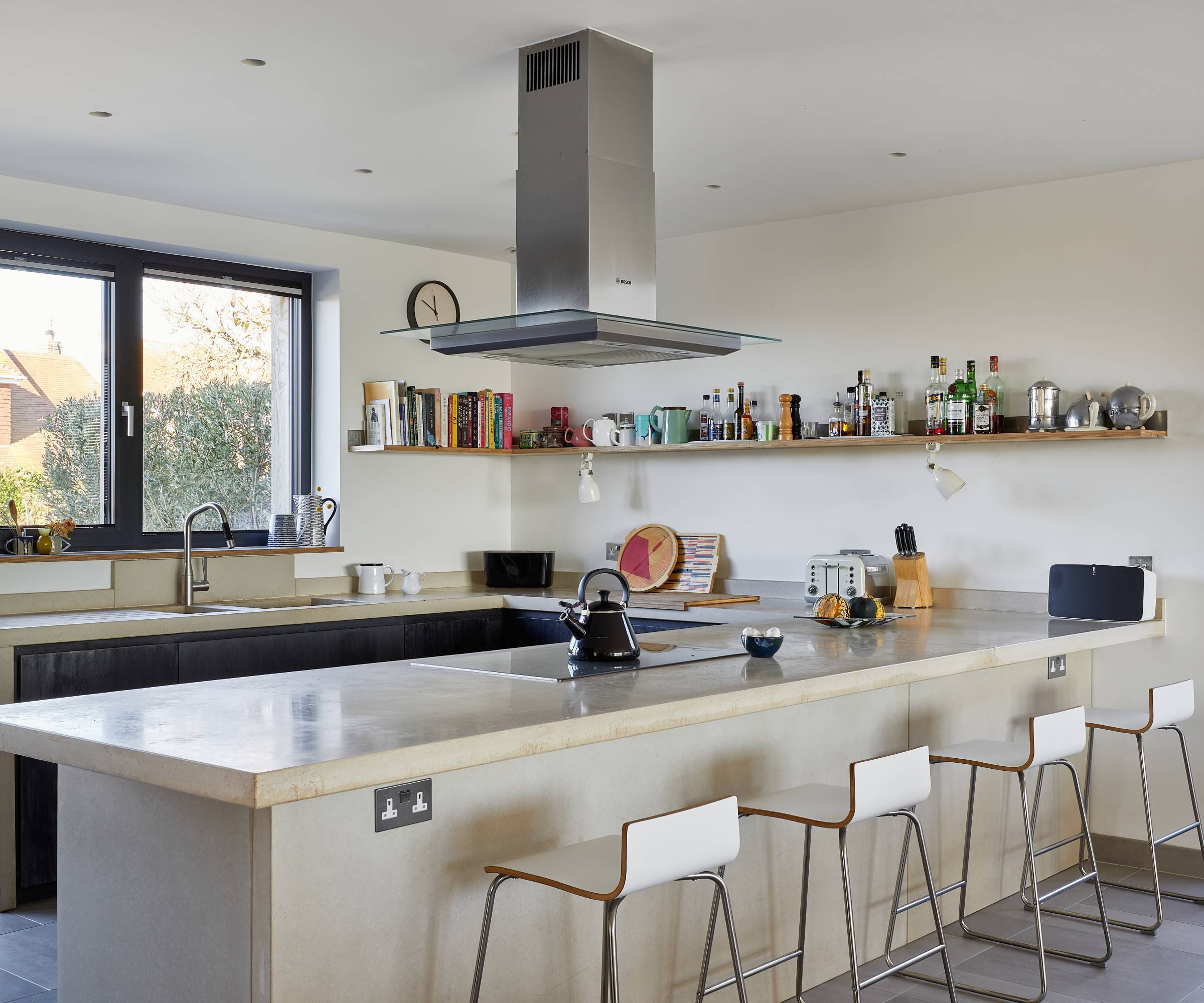
FAQs
Does a kitchen have to have an extractor fan?
The answer is no it doesn’t have to have an extractor fan but it does have to have some form of ventilation as Warren explains, “While there is no strict legal requirement to have an extractor fan, UK building regulations require some form of ventilation. It’s therefore a good idea to have an extractor fan or cooker hood as this will help manage your kitchen’s moisture levels.” Another simple option is to open a window.
But it's not always that simple as King reveals, “New build properties, and retrofit projects where energy efficiency measures are implemented should all have kitchen ventilation installed in line with the Building Regulations.”
She adds, “New build properties often have whole house centralised systems installed. While in refurbished properties Part F of the Building Regulations states if energy efficiency measures are carried out an assessment will be needed to determine what, if any, additional ventilation is needed, based on the estimated impact of work.”
Why? “This is to ensure energy efficiency measures don’t adversely affect IAQ (Indoor Air Quality) by making a property more air tight. She finishes by saying, “The easiest and safest way for contractors to comply with Part F is to choose continuous ventilation.”
Do I need an electrician to fit an extractor fan?
The simple answer to this with all three experts recommending you call in an electrician. Warren says, “Yes, it’s recommended to have an electrician install your extractor fan, as this may need to be wired into the mains.” King reiterates the point, “When fitting fans in a kitchen or bathroom, the electrical installation side of the work should always be carried out by a suitably qualified person.”
Hutt adds, “If installing an extractor fan, hiring a qualified electrician is recommended to ensure safe, regulation-compliant wiring.”
How do you ventilate a kitchen without a window?
There are a few options to choose from, Warren recommends the simple and straightforward approach, “Try to use either a cooker hood or an extractor fan to help draw out steam. You can also use a dehumidifier to help manage the humidity or moisture levels in your kitchen which will help reduce damp.” For more advice check our how to ventilate a room without windows guide.
While this can work for a lot of kitchens you may need to take a different approach as King explains, “A kitchen without a window needs extra thought since often this will be an internal kitchen with no access to an external wall.”
This will mean it's not possible to install a through-the-wall fan, so King advises a different option, “Ducted solutions are often needed which require higher pressure ventilation to move the air to where you want it.” She adds, “Choose inline ventilation products where a ceiling-mounted fan is ducted through the ceiling void to extract moisture to the atmosphere.”
King recommends a Vent-Axia inline ducted ACM 150 fan (available from Amazon) and the Vent-Axia site.
As an addition to help with ventilation King suggests the following, “It is vital to ensure compliance with Building Regulations that internal doors should allow air flow through the dwelling when they are shut, by providing a minimum free area equivalent to a 10mm undercut in a 760mm wide door.”
Poor ventilation in a kitchen can lead to ugly mould spoiling your walls and ceilings. Check out our How to clean mould off wood, How to remove mould from ceiling and Painting over mould guides to help get rid of it and hide it away.
Get the Homebuilding & Renovating Newsletter
Bring your dream home to life with expert advice, how to guides and design inspiration. Sign up for our newsletter and get two free tickets to a Homebuilding & Renovating Show near you.
Steve Jenkins is a freelance content creator with over two decades of experience working in digital and print and was previously the DIY content editor for Homebuilding & Renovating.
He is a keen DIYer with over 20 years of experience in transforming and renovating the many homes he has lived in. He specialises in painting and decorating, but has a wide range of skills gleaned from working in the building trade for around 10 years and spending time at night school learning how to plaster and plumb.
He has fitted kitchens, tiled bathrooms and kitchens, laid many floors, built partition walls, plastered walls, plumbed in bathrooms, worked on loft conversions and much more. And when he's not sure how to tackle a DIY project he has a wide network of friends – including plumbers, gas engineers, tilers, carpenters, painters and decorators, electricians and builders – in the trade to call upon.
